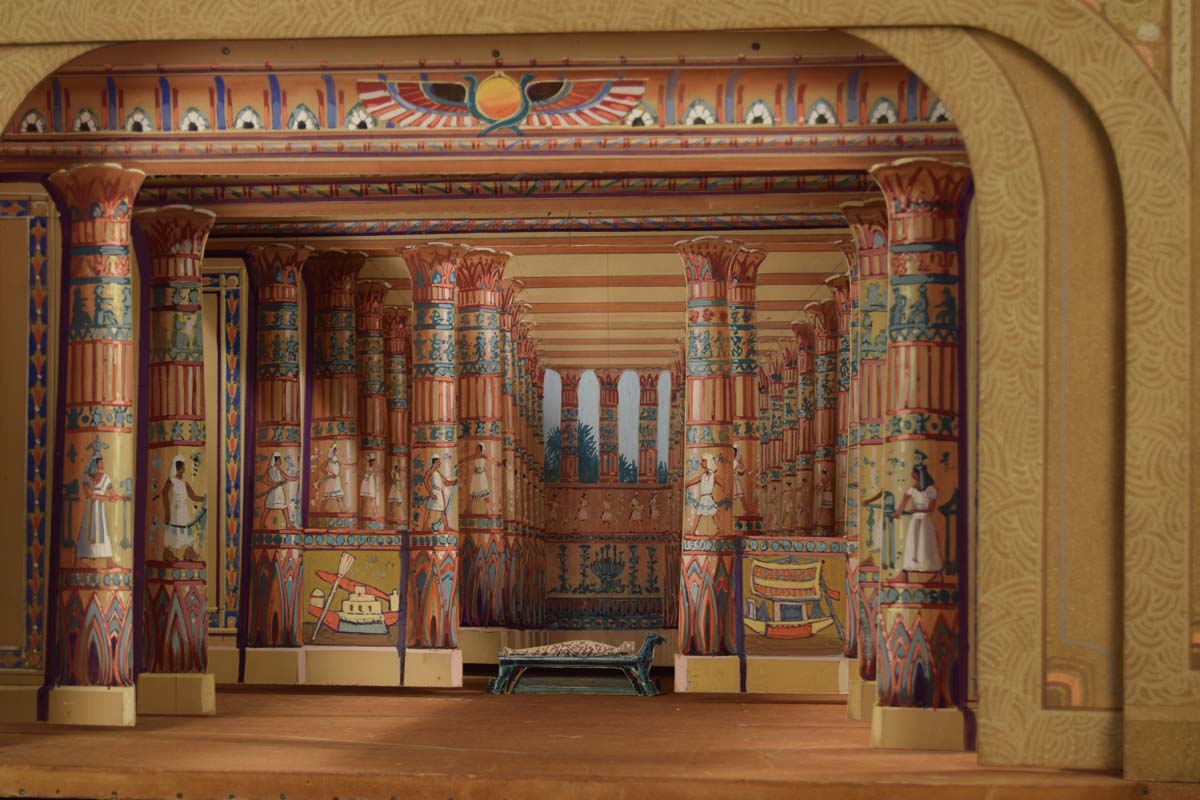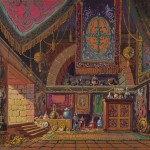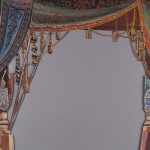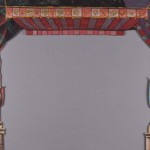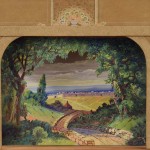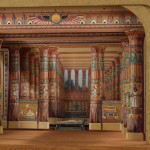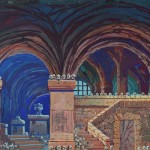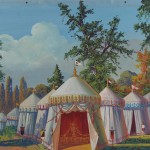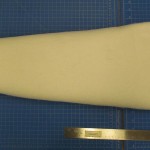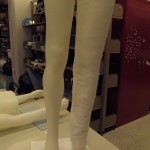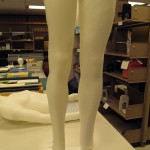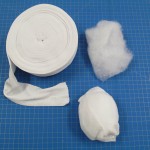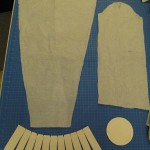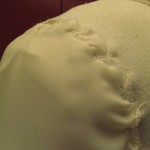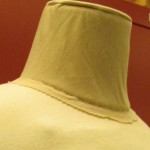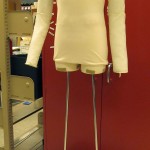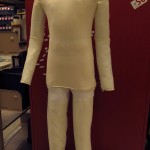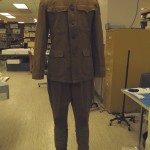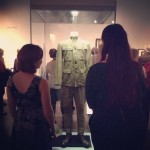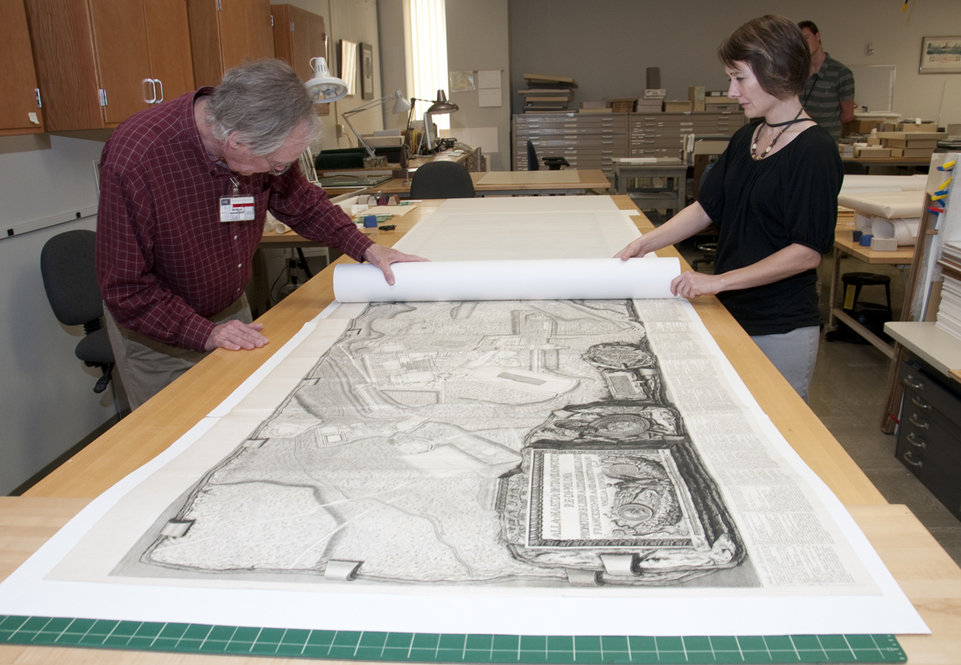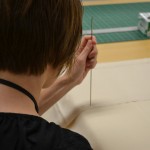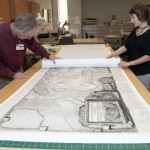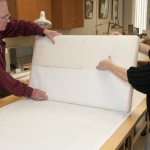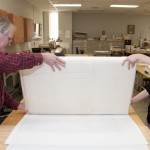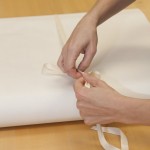The performing arts collection at the Harry Ransom Center includes a remarkable set of theater backdrops, all in miniature. This collection of 112 backdrops, along with other free-standing scene elements, depicts grand symbolic imagery: Egyptian landscapes, biblical imagery, grand architecture, and even catacombs. These scenes were created to support the theatrical rituals, or degrees, of the Scottish Rite of Freemasonry. But why are they miniature? The model-sized drops were used by a salesman to market stage scenery to Masonic temples, and the small size allowed for ease of transportation.
The model—and the corresponding full-sized scenes—was produced around 1900 by Sosman & Landis Studio, specialists in scenic art. The drops are painted in gouache onto paper illustration board. Some of the paperboards are cut to resemble “cut drops” and “leg drops,” scenic drop elements used further upstage from the backdrop to create depth of field for the audience. The collection is housed in a wooden travel trunk. Each drop has a wooden slat nailed along its top edge, and this slat allowed the drop to hang from two rails secured into the trunk. Because the drops were packed fairly tightly together in the trunk, they suffered damage over the years. To remove a drop, it had to be pulled up and out of the trunk, dragging against the adjacent drops in the process. This caused breaking of the sometimes-complex paperboard cutouts as well as rubbing and scraping of the paint layer. Many of the drops became partially detached from their wooden slats, and all were dirty from many years of settling dust and grime.
In the summer of 2014, paper conservation intern Rémy Dreyfuss began a project to conserve this beautiful example of turn-of-the-century theater technology. To begin, Rémy surveyed the entire collection, taking note of the condition of and photographing each item. He created a database to organize the descriptive data, condition information, and treatments performed on each item. The database links each item’s description to its corresponding digital image. Rémy surface-cleaned each drop using a soft brush and dry rubber sponge. He secured the boards that had become detached from their slats. He did not use nails for the re-attachment, but instead used small gussets of Japanese paper adhered in place with wheat starch paste. The gussets allow attachment to the wooden slat without unwanted stress on the paperboard. Rémy mended breaks and tears, again with archival quality Japanese paper and wheat starch paste.
Rémy also designed, along with Apryl Voskamp, Head of Preservation, a new storage system for the models. The updated storage allows better access to the materials, while minimizing risk of future damage. Though the drops will be stored in the new housing, the original travel trunk will remain a part of the collection.
In addition to the drops, this collection includes a small-scale stage. The drops can be arranged here to show the dramatic effect of the layered elements of backdrop, cut drop, leg drop, and border. Rémy completed his project by photographing the groups of drops in place on the stage, as they would be viewed during a performance.
Until now, these materials were almost inaccessible to curators and researchers because of their unstable condition. With the conservation treatment completed, the miniature scenery can be handled safely and made available for research.
As a final note, the Ransom Center is only a few blocks from a Scottish Rite Theater on West 18th Street in Austin. The theater houses, and still uses, an original collection of Sosman & Landis stage drops, the full-sized drops that the Ransom Center models represent. The Center’s conservation staff visited the theater to view the stage scenery and to get a backstage tour of the scenery collection and how it is used during performances.
Related content:
Explore other conservation-related content
Receive the Harry Ransom Center’s latest news and information with eNews, a monthly email. Subscribe today.
Please click on thumbnails below to view larger images.
